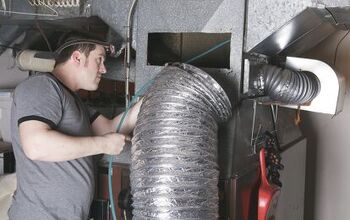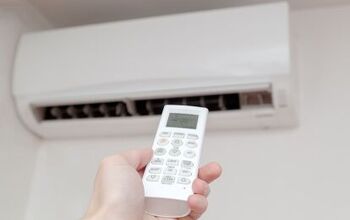Utility Pump Vs. Sump Pump: Which One Is Better?

Water, where you don’t want it, is always a major problem. Whether in your basement or a low spot in your yard, getting rid of it can be a priority. Many homeowners immediately think of a pump when faced with a standing water situation. But what kind of pump often presents questions. Which pump is best suited for a given situation, a sump pump, or a utility pump?
A sump pump is installed in a sump, or pit, at the lowest point in your home. The sump has a float switch. When water accumulates in the sump, the pump activates, removing the water. A utility pump is typically a portable pump used to remove wastewater. Standing water in low areas or emptying ponds are tasks for utility pumps.
Sump pumps and utility pumps share many of the same features. However, they are intended for different applications. If you have a home with a basement and a sump pump, you understand the importance of a sump pump. Many homeowners also value a utility pump in their garage or shop, even if they don’t have a basement or sump. Understanding both types of pumps, their characteristics, and their applications are essential for choosing which pump you need.
What is a Sump Pump?
Basically, a sump pump is a submersible pump. Homes or businesses with below-grade basements or crawl spaces often accumulate water in these spaces. Builders install sump pits and drains to prevent the water from damaging the foundations, floors, and furnishings. The underfloor drains collect any water into the sump, where the pump automatically transfers the water to the sewer system.
Unlike many utility pumps, sump pumps don’t normally have a connection on the intake. Sump pumps are not designed to lift water to the pump. Sump pumps can be used to drain swimming pools and fishponds.
What Makes a Sump Pump a Sump Pump and Not Just a Submersible Pump?
Sump Pumps are designed specifically for this task. Certain characteristics define a sump pump.
- Most sump pumps sit vertically with the intake opening as close to the floor as possible. This allows the pump to as much water as possible from the sump. Many better sump pumps will remove all but one-eighth of an inch of standing water from a sump pit.
- Most sump pumps are equipped with a float switch. The float switch will rise as the level of water rises and, at a certain point, will turn on the sump pump. The switch stays on until the water level is again near the bottom of the sump pit. Better sump pumps use an internal automatic sensor to perform this function.
- The output connection on most sump pumps is at least one inch in diameter and is threaded to allow easy connection to the pipes that carry the water to the sewer system. Some sump pumps can be adapted to connect to a garden hose allowing the pump to drain ponds or swimming pools.
- The lift on the sump pump should be great enough to move the water up several feet to the sewer connection. This is important since many small utility pumps can only pump water up a few feet.
Sump pumps usually have water alarms and airlock prevention features and don’t require priming to operate the pump. Typically, utility pumps are plugged into your home’s electrical system.
What is a Utility Pump?
Utility pumps are designed for various uses in and around your home. Most utility pumps are not submersible. This makes them useful in a wider variety of ways than a sump pump. Utility pumps usually have an intake connection allowing an intake hose to be connected. Typically, utility pumps operate at a higher output pressure than sump pumps. Some utility pumps are equipped with a garden hose connection on the outlet.
How Are Utility Pumps Used?
Utility pumps can serve several roles such as:
- Utility pumps can be handy for removing standing water from enclosed spaces such as ponds, swimming pools, or even clogged sinks.
- Utility pumps can be used to boost water pressure. Connecting a utility pump to a rain catchment system or water holding cistern allows the water to be delivered a greater distance and at a higher pressure than just gravity feed.
- Some utility pumps can pull water from several feet below the pump, making them useful for removing water from stairwells or window wells.
Utility pumps are generally considered portable pumps. Most are small enough to be easily moved from place to place when needed.
How Are Utility Pumps Powered?
Utility pumps can be powered in several ways. Depending on the application, you can find utility pumps that get their power in these ways.
- Direct Current – Many boat owners are familiar with small DC-powered electric utility pumps used to remove water from the bilge of their boats. These pumps come in various sizes and can run on 12 or 24 volts.
- AC Current – Most home utility pumps run on 120 volt AC current. These pumps are the most commonly used for household chores such as draining ponds, removing water from swimming pools, or d-watering low spots in your yard. When using an AC utility pump, care should be used to avoid electric shocks. The utility pump should always be plugged into a GFCI outlet.
- Gasoline Powered Utility Pumps – Larger utility pumps are often powered by small gasoline engines. This type of utility pump can move large amounts of water quickly and is often seen on construction sites where standing water is a problem.
- Hydraulic Utility Pumps – When electrical power in remote areas is unavailable, some utility pumps can be operated using a hydraulic take-off from a vehicle or tractor.
Many homeowners find a small electric utility pump a great convenience around their home. These pumps can be used for many situations where water needs to be moved or pressure must be boosted.
What Should I Look for When Purchasing a Sump Pump?
Sump pumps, like all equipment, must be replaced from time to time. If your sump pump has failed, there are things that you should consider for your new sump pump. More than likely, your old sump pump is several years old. Technology has changed, and sump pumps have improved, giving you more options.
Which Type of Switch Should you Choose?
Typically, submersible sump pumps come with a switch installed that turns on the pump when the water level in the sump pit reaches a preset level. There are three types of switches commonly used on submersible sump pumps.
- Float Switches – Many submersible sump pumps come equipped with a float switch. Typically, the float is attached to a swing arm on the pump’s housing. As the water level in the sump pit rises, the float rises and activates the pump. As the water level falls, the swing arm deactivated the pump at the preset level.
- Diaphragm Switches – Some submersible sump pumps have an internal diaphragm switch. As the water level in the sump pit rises, air pressure pushes against the diaphragm and activates the pump. The air pressure decreases as the water level falls, and the switch opens, turning off the pump.
- Mercury Switches. – Mercury switches operate using a small amount of mercury trapped inside a glass vial. At one end of the vial are two wires. When the mercury is in contact with the wires, the pump operates. The mercury switch is usually enclosed in a float ball at the end of a short length of electrical cable. When the water level rises, the float ball lifts, and the mercury inside the switch completes the circuit to start the pump.
All these switch systems work reliably. However, like any mechanical apparatus, all three types of switches are prone to failure. A regular inspection, testing, and maintenance program are essential to keep your sump pump operating reliably.
Flow Capacity and Lift
Your sump pump must be sized correctly for the application. If the pump is undersized, you risk flooding. The pump may not keep up with the inflow of water into the sump pit. You must be careful when reading the labels on some sump pumps. Some manufacturers advertise a flow rate such as 2,400 gallons per hour. However, this rating is at the outlet of the pump.
You must use a pump with a large enough capacity where the discharge enters the sewer connect. This is usually several feet above the sump pit. The lift necessary to reach this point can reduce the overall flow capacity of a sump pump significantly.
Materials and Construction
Remember that your sump pump is a vital piece of equipment protecting your home. Reliability and durability are key factors in choosing a sump pump. Look for a pump with metal housings. The best and most popular are those sump pumps with cast-iron, bronze, or stainless steel housings.
Avoid plastic or sheet metal in your sump pump. These cheap sump pumps don’t have the strength or durability to protect your home reliably. Don’t bet the safety and security of your home on a cheap pump that may fail when it is needed most.
Utility Pump or Sump Pump?
Not every home has or needs a sump pump. However, there are many uses around most homes for a utility pump. Utility pumps are not replacements for a sump pump. Sump pumps may be pressed into service for some situations where a utility pump is needed. Understanding the difference is a key factor when purchasing pumps for your home.

Dennis is a retired firefighter with an extensive background in construction, home improvement, and remodeling. He worked in the trades part-time while serving as an active firefighter. On his retirement, he started a remodeling and home repair business, which he ran for several years.
More by Dennis Howard



























